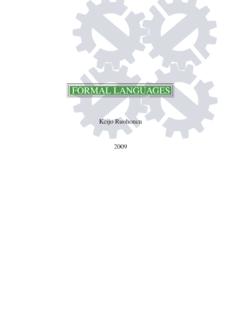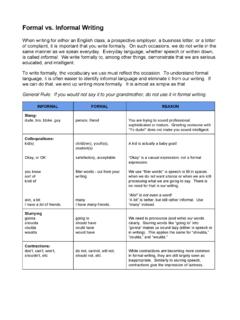Transcription of Academic Writing - University of Wollongong
1 Academic LITERACY Learning, Teaching & Curriculum Learning Development Academic Writing Spoken & written language INTRODUCTION: WHAT IS Academic ENGLISH? The way we use language depends on factors such as the situation we are in (eg at a friend s house, in a job interview, in a tutorial); who we are talking to (eg friends, potential employer, tutor); and our means of communication (eg conversation face to face, telephone, email, report). These factors influence: the amount of everyday language we use: compare I think to it was decided, or the decision how and to what degree we express our attitude and opinion: eg compare the new treatment is excellent to the benefits of the treatment are.
2 How informal or formal our language is: eg compare Are you selling that great little house? to the property will be sold to what degree we include abstract and technical language : eg compare we treat patients to the treatment of patients with deep-seated tumours. Our decisions about the way we use language are to a great extent unconscious ones: we instinctively know how to adapt our language to the situation. This is also the case when you write your assignments at University . For example, you will know it is best not to write something like this: My mum s an accountant and she thinks you should buy shares in the communication industries.
3 Instead, you would say something like this: Some financial advisors recommend purchasing communication industry shares. While you may be aware of some requirements and features of Academic English, others may cause confusion. How, for example, do you respond to assignment questions which ask What do you think when you know from your reading that Academic language seems to contain little expression of opinion and attitude? SPOKEN AND WRITTEN language : SOME IMPORTANT DIFFERENCES WHAT ARE THE DIFFERENCES? There are a number of differences between spoken and written language (Mewburn, Firth & Lehmann, 2019).
4 For example, we can characterise spoken language as quite informal , colloquial and presumably unstructured (since it is often spontaneous). Furthermore, spoken language mostly takes place in the form of a dialogue with another speaker. Written language , on the other hand, is generally more structured, formal , impersonal and wordy. What s more, it typically forms a monologue rather than a dialogue. However these distinctions aren t necessarily so clear cut. Consider these lines below from an email to a friend. Hi Sarah Remember that adorable house I showed you when you were last here? Well guess what, it s for sale!
5 2 | Academic Writing : SPOKEN & WRITTEN language Although it is in the written mode, the email starts off more like a dialogue (a question is asked of the reader). It is also quite informal (first name Sarah), and shows the writer s attitude (that adorable house). In other words, this example of Writing seems more like spoken language . Similarly, here is an example of spoken language (at a house auction) which is more like written language : Prospective bidders are required to register with the agent before the commencement of the auction. Here the language is formal , wordy (commencement of the auction), and impersonal (prospective bidders).
6 This overlap between spoken and written language can best be understood when spoken and written language are viewed in terms of a continuum. In other words, there isn t a clear distinction between spoken and written forms, rather a gradual progression from the one form to the other. This continuum between spoken and written language can be shown diagrammatically. At one end of the continuum we have the most spoken language . This is language which accompanies an action. Most written refers to language texts in which there is maximum distance between writer and reader, and the language no longer accompanies the action rather it reflects on it.
7 The overlapping dotted lines in the diagram represent types of spoken language which are more written and types of written language which are more like spoken language . To understand the concepts of language accompanying action, and language reflecting on actions, study these examples below. The examples move from the most spoken forms of language (active), to the most written forms (reflective).The numbers of the examples correspond to the numbers on the continuum. language accompanying action language as reflection most spoken most written 1 2 3 4 5 6 7 1.
8 Action only. Students protesting outside Parliament House. 2. What two students said to each other in the heat of the protest. Hey, Jack, here s a politician coming out now. Let s yell abuse. 3. A politician watching the protest and telling the secretary what was happening. Well, there s a whole bunch of students down there, waving their banners around, looking really peeved, and can you believe it, they re asking for free education. 4. A group of students reflecting on the day in the University Bar that evening. Man, you should have seen Carol when the police arrived. She was screamin in their faces and shakin her fists.
9 When they arrested her, she was mad as a cut snake. 3 | Academic Writing : SPOKEN & WRITTEN language language accompanying action language as reflection 5. A report of the protest in the next day s newspaper. Almost the entire front lawn of Parliament House was filled with angry students protesting against the increase in University fees on Thursday. 6. An explanation (time unspecified) of why the protest took place. Student rebellion against the Government s policy to increase student fees has its origins in Australia s social welfare history. 7. A work on socialist philosophy relating to free education.
10 While the socialist ideology values the concept of free education, contemporary western society appears to reject this ideology. We can summarise the features of spoken and written language as follows: SPOKEN WRITTEN context dependent Jack, here s a politician coming out now. Here is a reference to something in the immediate context while now is also context bound. context independent Almost the entire front lawn .. As the text is removed from the situation, all the information has to be supplied. personal, informal , colloquial Let s yell ; mad as a cut snake; Carol; Jack formal language appears to reject this ideology objective (appears); specialist language active when they arrested her passive when she was arrested clauses and conjunctions She was screamin in their faces and shakin her fists.


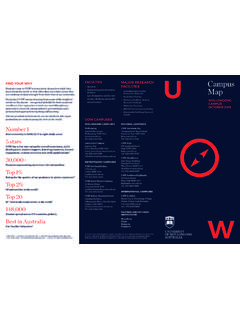
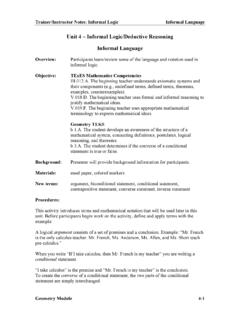
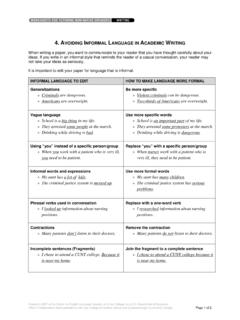
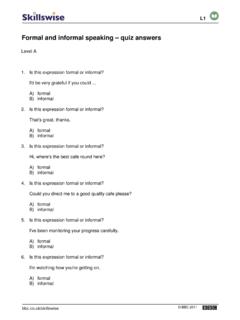
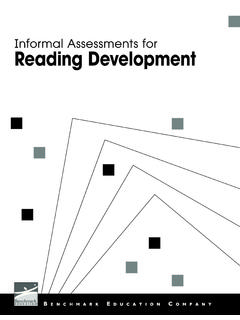
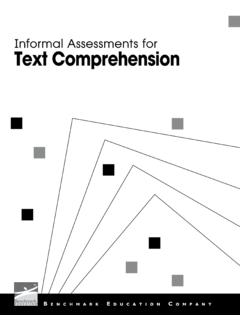
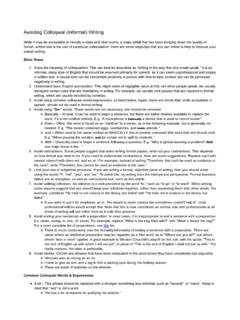
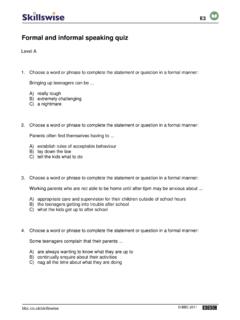
![Formal and Informal Essays[1] - OpenStudy](/cache/preview/5/2/f/9/6/a/b/d/thumb-52f96abd94d259826824a181c6312ef5.jpg)
